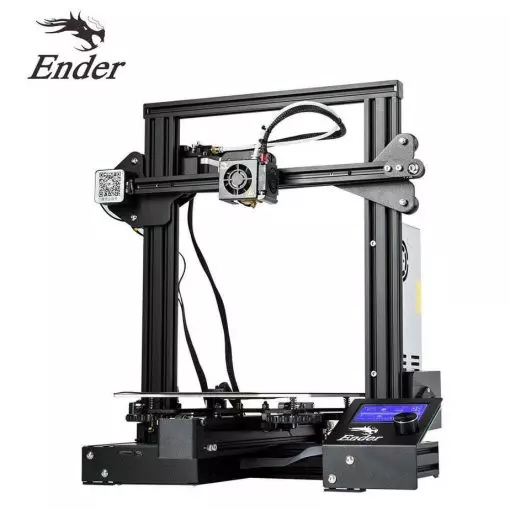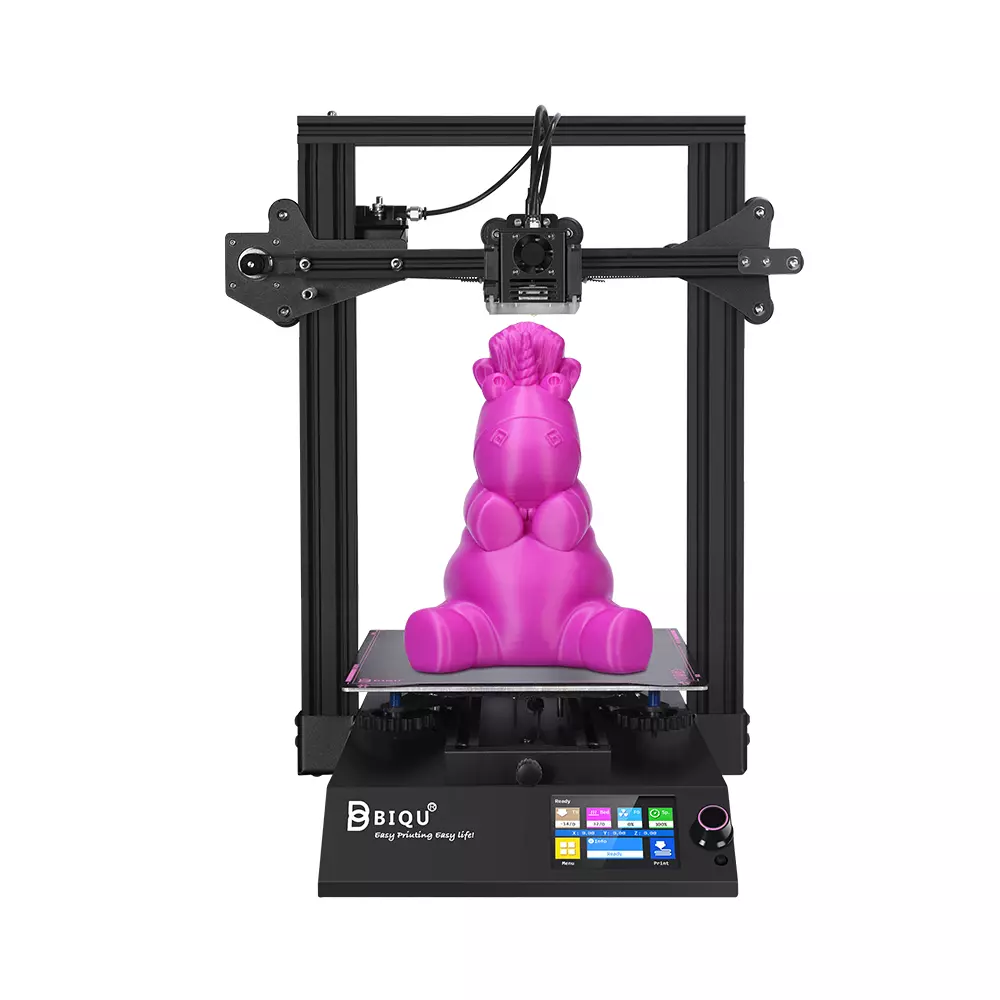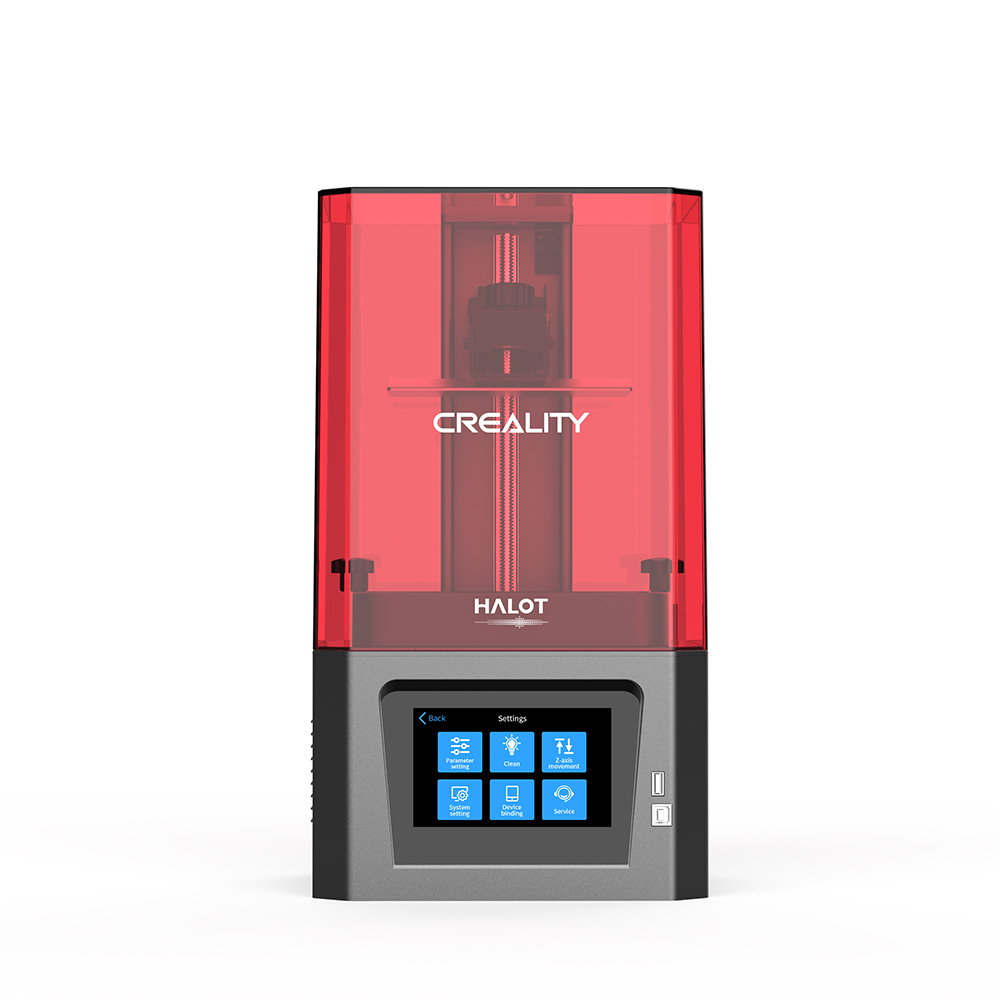Compare Ender 3 vs BIQU B1 vs Halot One
Comparison between the best 3D printers
Choose the best 3D printer at the best price. The cheapest 3D printers are here.
Buy a 3D printer here with 3D Fila.
 |
 |
 |
|
| Model | Ender 3[BUY Ender 3] |
BIQU B1 |
Halot One |
| Printing Material | Filament | Filament | Resin |
| Estimated price | $210,00 | $269,00 | $250,00 |
| Fabricante | Creality 3D | BigTreeTech | Creality 3D |
| Release Year | 2018 | 2020 | 2021 |
| Print Volume [mm] | 220x220x250 | 235x235x270 | 127x80x160 |
| Printer Size [mm] | 440x440x465 | 412x402x492 | 221x221x404 |
| Weight [kg] | 6,62 | 8,00 | 7,1 |
| Power Loss Recovery | NO | YES | NO |
| Maximum Resolution [mm] | 0,1 | 0,1 | 2k |
| Processor | 8 bits | 32 Bits BTT SKR V 1.4 | |
| Display | Mono | Touchscreen TFT 3,5'' | |
| Power Supply | 24V / 270W | 24V / 360W | |
| Connectivity | SD / USB | SD / USB | |
| Operating systems | Windows, Mac, Linux | Windows, Mac, Linux | Windows, Mac, Linux |
| Date of registration in the system | 2021-04-13 | 2021-04-14 | 2022-10-11 |
| Release date | 2018 | 2020 | 2021 |
| Extra features | The Ender 3 V1 is a DIY assembly 3D printer, a sales leader since 2017, standing out for its cost-benefit. With a wide printing capacity, it has a CNC machined structure for precision and stability. It offers high-precision prints with low noise, thanks to its innovative V-profile and pulleys. It has a self-adhesive magnetic platform for easy removal of models and excellent adhesion. The Ender 3 heats up quickly, reaching 100°C in 5 minutes, ideal for agile prints. It includes protection against power failures, allowing you to resume printing after interruptions, saving time and material. | The BIQU B1 is an advanced 3D printer with a silent 32-bit BTT SKR V1.4 motherboard and ARM Cortex-M3 CPU, offering DIY interfaces (I2C, SPI, WiFi) and dual Z-axis. Its dual BTT B1 TFT35 V3.0 operating system allows real-time monitoring and multiple printing modes, including G-code visualization effects. It stands out for its BIQU SSS (Super Spring Steel), ensuring easy model adhesion and simplified removal, with the possibility of using it on both sides. It includes a filament sensor, automatically pausing printing in case of filament breakage. The multicolored RGB lights integrated into the hotend allow you to view the printing status even at night. Additional notes include the need for a BIQU-specific Type-C cable and extra interfaces for smart filament sensor and BL Touch. | Crealitys Halot-One printer stands out with several innovative features. It has a high-resolution touchscreen, providing an intuitive and responsive interface. Its quiet printing capability is remarkable, ideal for environments where noise is a concern. Assembly and setup are simple, with automatic functions facilitating quick start. Among its features, remote monitoring and adjustments via the Creality Cloud app stand out, simplifying remote print management. Replacing the FEP in the resin vat is easy, and the printer even includes extra FEP sheets. Top cover removal detection increases safety by automatically pausing printing. In addition, its integral light source promises high uniformity, optimizing print quality. |
| Support for multiple colors and materials (AMS and CFS) | NO | NO | NO |
Notes * |
|||
| Cost-benefit | 6 / 10 | 7 / 10 | 8 / 10 |
| Hardware | 0.5 / 10 | 2 / 10 | 0.6 / 10 |
| Screen | . | . | . |
| Print volume | 3 / 10 | 3 / 10 | 3 / 10 |
| Performance | 1 / 10 | 1 / 10 | 9 / 10 |
| [BUY Ender 3] |
Conclusion |
| In comparing the three 3D printers—Ender 3, BIQU B1, and Halot One—it’s clear that each model offers distinct advantages suited to different user needs. **Ender 3** stands out as an affordable option with a solid cost-benefit ratio, making it ideal for beginners or those seeking a reliable workhorse for basic projects. While it lacks power loss recovery and some advanced features, its straightforward assembly, decent print volume, and community support make it a popular choice among entry-level users. **BIQU B1**, positioned as a more advanced printer, offers significant features like a silent motherboard, dual Z-axis, and a filament sensor. However, its complexity may be off-putting for novices. The dual printing modes and intuitive operating system appeal to users needing more versatility and real-time monitoring capabilities. Despite its higher price, it provides excellent value for those interested in more intricate printing tasks. **Halot One**, while slightly pricier, excels in user experience with high-resolution touchscreen controls and various automated functions. Its capabilities for remote monitoring align well with modern print management needs, making it a strong candidate for users focused on convenience and efficiency. The printer’s quiet operation adds to its appeal for home or office environments. In summary, if budget is the primary concern, the **Ender 3** offers great value. For users looking for advanced features and versatility, the **BIQU B1** is a solid choice, while **Halot One** shines for those who prioritize ease of use and connectivity options, albeit at a higher cost. Each printer has its unique strengths, thus the best choice will depend on individual printing needs and preferences. |

